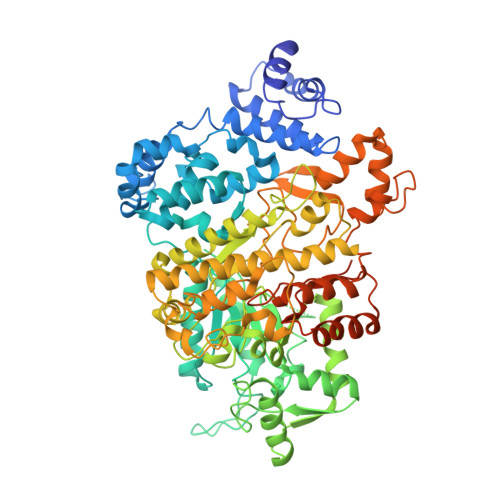Identification of Non-nucleoside Human Ribonucleotide Reductase Modulators.
Ahmad, M.F., Huff, S.E., Pink, J., Alam, I., Zhang, A., Perry, K., Harris, M.E., Misko, T., Porwal, S.K., Oleinick, N.L., Miyagi, M., Viswanathan, R., Dealwis, C.G.(2015) J Med Chem 58: 9498-9509
- PubMed: 26488902
- DOI: https://doi.org/10.1021/acs.jmedchem.5b00929
- Primary Citation of Related Structures:
4X3V - PubMed Abstract:
Ribonucleotide reductase (RR) catalyzes the rate-limiting step of dNTP synthesis and is an established cancer target. Drugs targeting RR are mainly nucleoside in nature. In this study, we sought to identify non-nucleoside small-molecule inhibitors of RR. Using virtual screening, binding affinity, inhibition, and cell toxicity, we have discovered a class of small molecules that alter the equilibrium of inactive hexamers of RR, leading to its inhibition. Several unique chemical categories, including a phthalimide derivative, show micromolar IC50s and KDs while demonstrating cytotoxicity. A crystal structure of an active phthalimide binding at the targeted interface supports the noncompetitive mode of inhibition determined by kinetic studies. Furthermore, the phthalimide shifts the equilibrium from dimer to hexamer. Together, these data identify several novel non-nucleoside inhibitors of human RR which act by stabilizing the inactive form of the enzyme.
- Department of Pharmacology, School of Medicine, Case Western Reserve University , Cleveland, Ohio 44106, United States.
Organizational Affiliation:


















